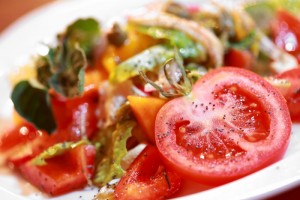The Joy of Seeds
 Resisting the urge to snack – or at least on something unhealthy – is one of the difficulties many dieters face. Finding alternative, healthy snacks is usually high on the list of priorities. One option that certainly fits the bill, and are becoming increasingly popular, are small and unassuming seeds.
Resisting the urge to snack – or at least on something unhealthy – is one of the difficulties many dieters face. Finding alternative, healthy snacks is usually high on the list of priorities. One option that certainly fits the bill, and are becoming increasingly popular, are small and unassuming seeds.
They’re packed with plenty of essential vitamins and minerals, are low in fat and a recommended low GI food. In fact, the GI diet suggests that seeds slowly release energy, which in turn helps to reduce hung pangs. Amongst the many seeds on offer, popular nibbles include sunflower, pumpkin, sesame, linseed and hemp.
All seeds are packed with fibre and low in sugar, but hemp has even more and linseed can have a laxative effect. The tiny sesame seeds, which are easier to eat if mixed in with another seed, have a high calcium content, and tasty green pumpkin seeds and sunflower seeds contain valuable vitamin C, iron and zinc.
What I’ve found works well is to have a jar of mixed seeds handy, prominently placed in the kitchen or wherever you’d usually find yourself reaching for a biscuit. You can buy mixed packs of seeds from health food stores, or buy them individually and mix them yourself. Sometimes I throw in a few sultanas or dried fruit, such as papaya or pineapple, or even a few nuts.
Do be aware of some of the seeds available to buy, which have been roasted or fried, making them less-healthier than their unadulterated counterparts.
As well as nibbling on seeds when you feel an urge to snack, you can also use them in cooking. For example, try sprinkling a handful of seeds onto salads, into low-fat yogurt, on your cereal in the morning or even chuck a few into a stir-fry. They may be tiny in size, but seeds really are healthy and very versatile!
By Rachel Newcombe








